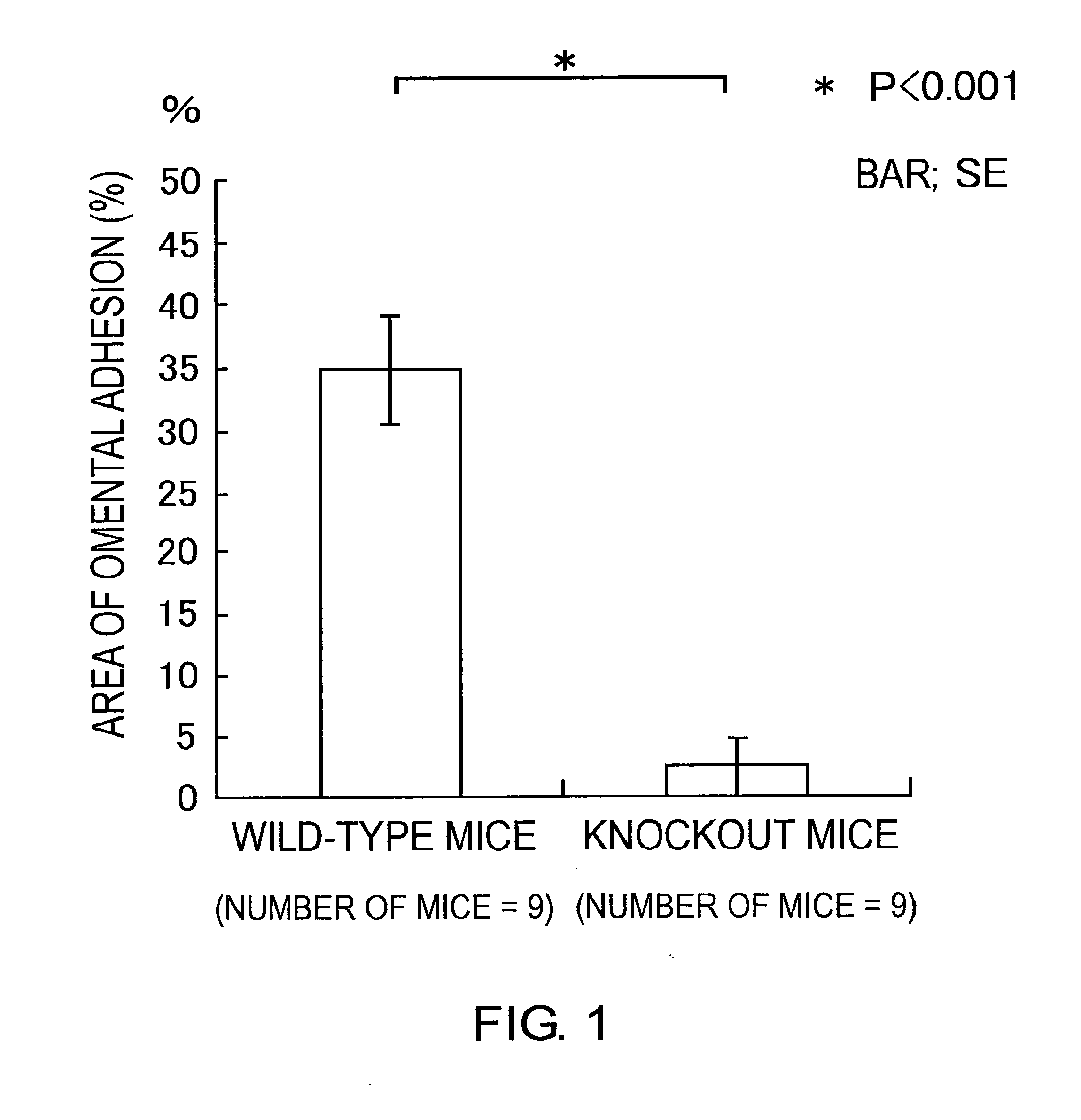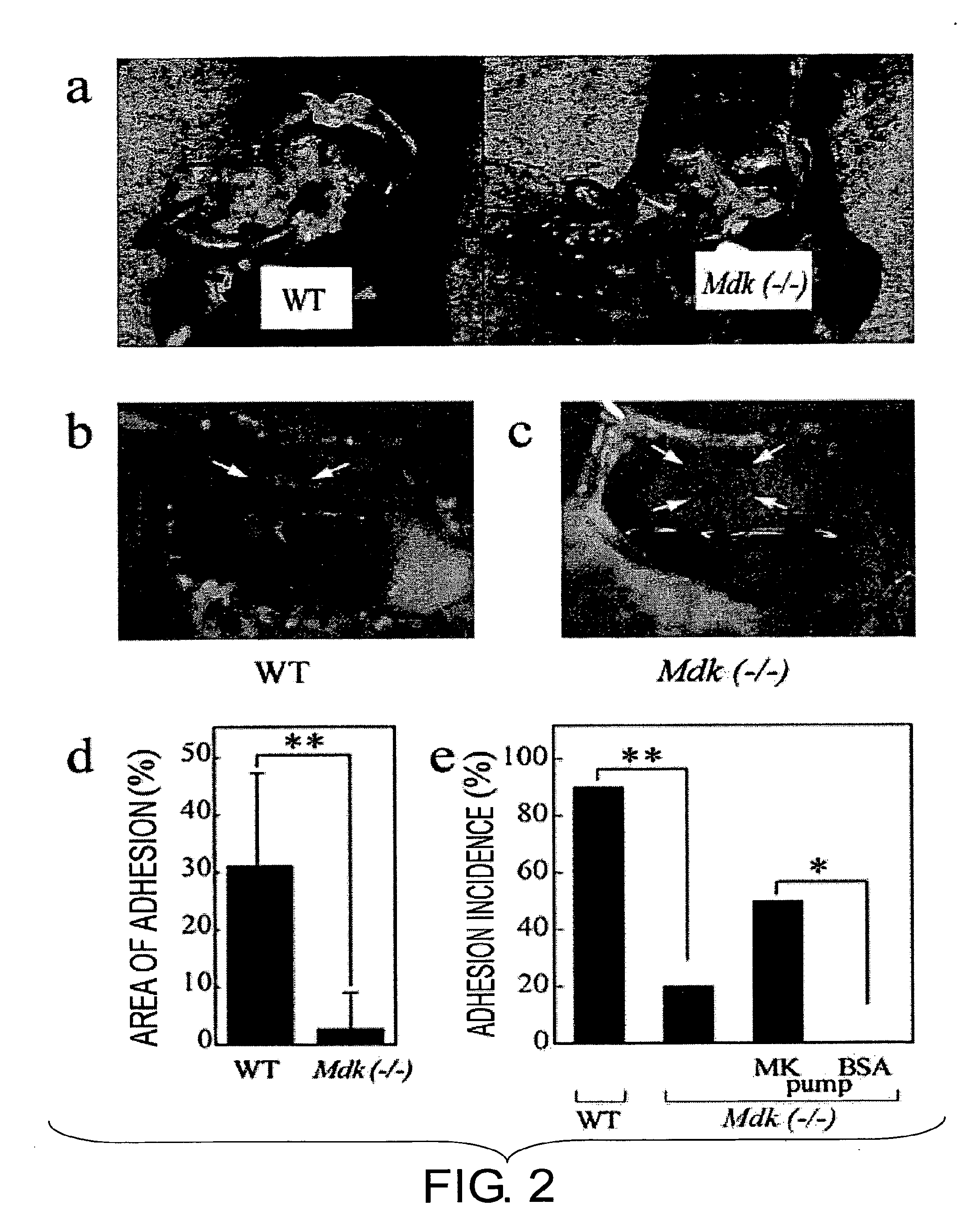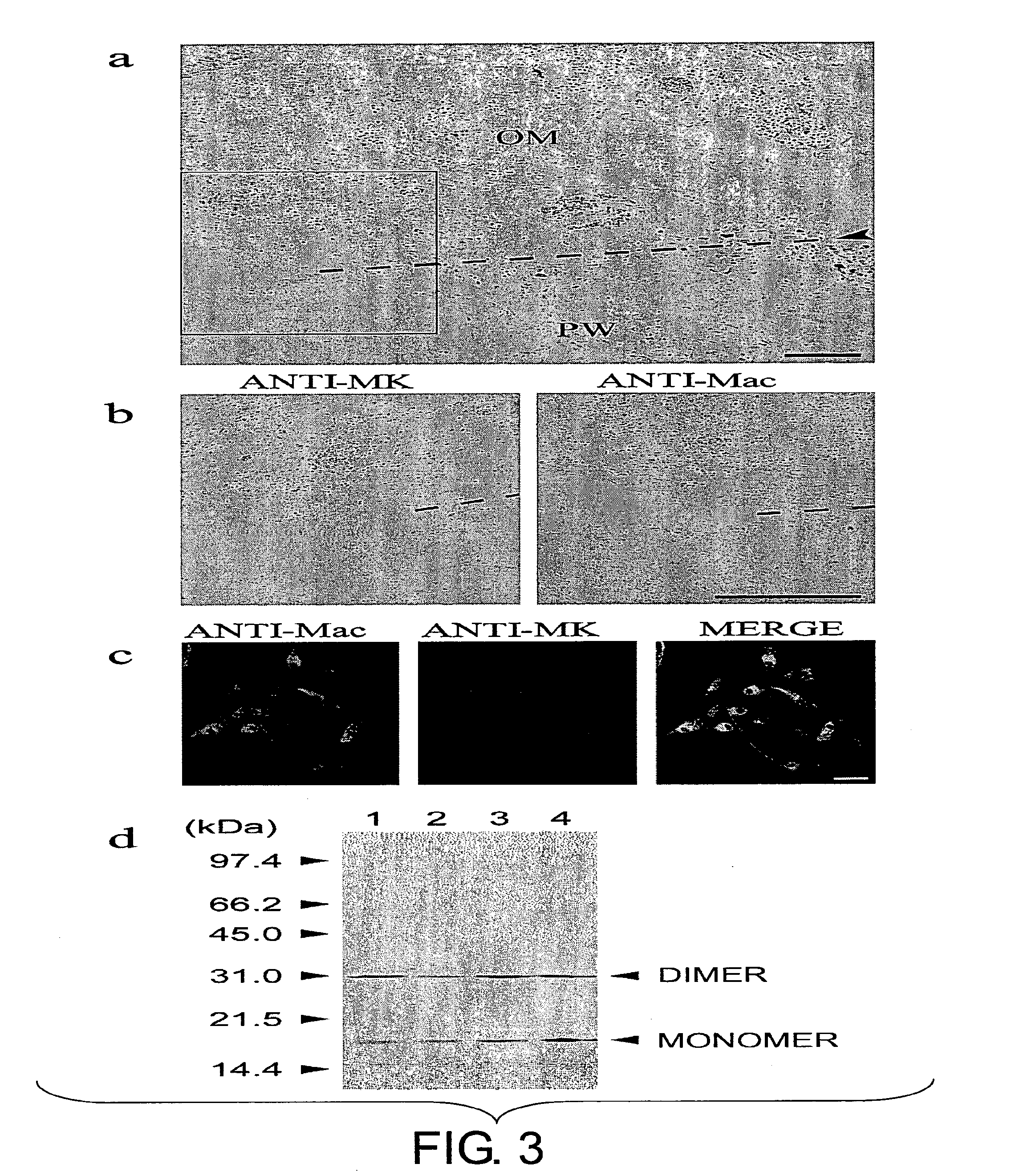Preventive for adhesion following abdominal surgery
a technology of abdominal surgery and adhesion prevention, which is applied in the field of prevention of postlaparotomy adhesion, can solve the problems of adhesion between, obstruction or constriction of intestinal passages, and adhesive ileus
- Summary
- Abstract
- Description
- Claims
- Application Information
AI Technical Summary
Benefits of technology
Problems solved by technology
Method used
Image
Examples
example 1
Effects of Midkine on Post-Laparotomy Adhesions
(1) Preparation of Knockout Mice
[0042]Midkine (- / -) mice were created as described (Nakamura, E. et al., Genes Cells, 3, 811-822, 1998). The heterozygote was backcrossed to C57BL / 6J mice for nine generations. Then, the backcrossed progenies were crossed with each other to produce midkine (- / -) mice having the C57BL / 6J genetic background. C57BL / 6J mice were used as the wild-type control.
example 2
Midkine Expression in Regions of Adhesion
[0048]Midkine expression was determined by Western blotting of the heparin-binding protein derived from 1.7 mg of extract as described (Muramatsu, H. et al., Dev. Biol. 159, 392-402, 1993). The anti-mouse midkine antibody was produced as previously described (Muramatsu, H. et al., Dev. Biol. 159, 392-402, 1993). The sites of midkine expression were revealed by immunohistochemistry (Nakamura, E. et al., Genes Cells, 3, 811-822, 1998) using an affinity-purified rabbit anti-mouse midkine antibody as the primary antibody and a horseradish peroxidase-conjugated affinity-purified goat anti-rabbit IgG (Jackson ImmunoResearch Laboratories, Inc.; West Grove, Pa.) as the secondary antibody. Positive signals were visualized using diaminobenzidine tetrahydrochloride (Amersham Pharmacia Biotech; Tokyo, Japan). A fluorescein isothiocyanate-labeled goat anti-rabbit IgG (Sigma; St. Louis, Mo.) can also be used as the secondary antibody. Staining of the macro...
PUM
 Login to View More
Login to View More Abstract
Description
Claims
Application Information
 Login to View More
Login to View More - R&D
- Intellectual Property
- Life Sciences
- Materials
- Tech Scout
- Unparalleled Data Quality
- Higher Quality Content
- 60% Fewer Hallucinations
Browse by: Latest US Patents, China's latest patents, Technical Efficacy Thesaurus, Application Domain, Technology Topic, Popular Technical Reports.
© 2025 PatSnap. All rights reserved.Legal|Privacy policy|Modern Slavery Act Transparency Statement|Sitemap|About US| Contact US: help@patsnap.com



